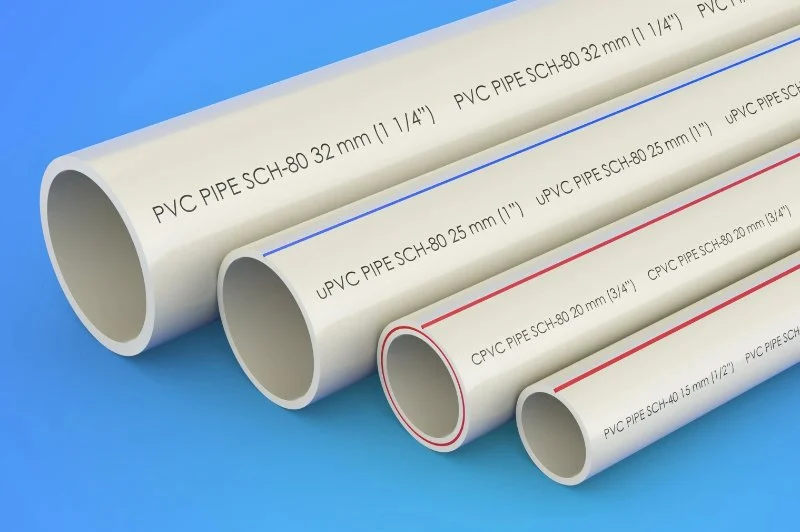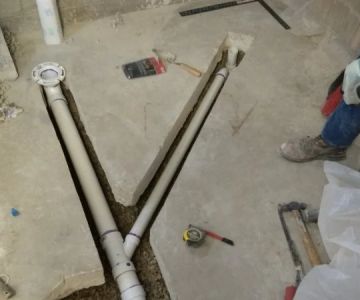
- 1. Introduction to PVC, CPVC, and PEX Pipes
- 2. What is PVC (Polyvinyl Chloride)?
- 3. What is CPVC (Chlorinated Polyvinyl Chloride)?
- 4. What is PEX (Cross-Linked Polyethylene)?
- 5. Key Differences Between PVC, CPVC, and PEX Pipes
- 6. Choosing the Right Pipe for Your Project
1. Introduction to PVC, CPVC, and PEX Pipes
When it comes to plumbing and piping solutions, there are various types of pipes available to meet different needs. PVC (Polyvinyl Chloride), CPVC (Chlorinated Polyvinyl Chloride), and PEX (Cross-Linked Polyethylene) are three of the most common materials used in residential and commercial plumbing systems. Each of these materials has unique properties and applications that make them suitable for different plumbing projects. Understanding their differences is key to making the right choice for your needs.
2. What is PVC (Polyvinyl Chloride)?
PVC is one of the most commonly used materials for plumbing pipes. It is a lightweight, durable, and cost-effective option that is widely used in both residential and commercial applications. PVC pipes are known for their ability to resist corrosion, making them ideal for a variety of applications, such as:
- Cold Water Systems: PVC is often used for cold water distribution in plumbing systems.
- Drainage Systems: PVC is commonly used for waste and vent systems because it is highly resistant to chemical corrosion.
- Outdoor Piping: Due to its resistance to corrosion and UV light, PVC is also used in outdoor irrigation and drainage systems.

Hydro Brothers Jetter & Drains
ClaremontLos Angeles CountyCalifornia
1913 Wheaton Ave, Claremont, CA 91711, USA
3. What is CPVC (Chlorinated Polyvinyl Chloride)?
CPVC is a variation of PVC that has been chlorinated to make it more resistant to heat and chemicals. This makes CPVC an excellent choice for both hot and cold water applications. Some key characteristics of CPVC include:
- Higher Temperature Resistance: CPVC can withstand temperatures up to 200°F (93°C), making it suitable for hot water distribution.
- Corrosion Resistance: Like PVC, CPVC is resistant to corrosion, which is essential for systems that deal with water that can contain high levels of minerals or chemicals.
- Versatile Usage: CPVC is commonly used in residential plumbing, industrial applications, and even in certain commercial settings.
4. What is PEX (Cross-Linked Polyethylene)?
PEX is a flexible plastic tubing that has gained popularity in modern plumbing systems due to its flexibility, ease of installation, and resistance to both high and low temperatures. Key features of PEX pipes include:
- Flexibility: PEX can be bent to fit around obstacles and is easier to install than rigid pipes, especially in tight spaces.
- High Temperature and Freeze Resistance: PEX can handle hot water temperatures and is resistant to freezing, making it ideal for areas prone to cold temperatures.
- Durability: PEX is highly resistant to scale and chlorine, and it won’t corrode or develop pinhole leaks over time.
5. Key Differences Between PVC, CPVC, and PEX Pipes
Understanding the differences between these three materials is essential when choosing the right pipe for your project. Here’s a breakdown of the key differences:
- Temperature Tolerance: PVC is best for cold water applications, while CPVC is suitable for both hot and cold water. PEX is flexible and resistant to both hot and cold water, making it versatile for many plumbing systems.
- Flexibility: PVC and CPVC are rigid, while PEX is flexible and easier to work with, especially in tight spaces.
- Durability: PEX offers better durability, especially in cold environments, and is more resistant to freezing compared to PVC and CPVC.
- Cost: PVC tends to be the most affordable option, followed by CPVC and PEX, which can be more expensive due to their superior features.
- Corrosion Resistance: PVC, CPVC, and PEX all offer excellent resistance to corrosion, though PEX has an edge in terms of long-term durability due to its flexibility.
6. Choosing the Right Pipe for Your Project
When deciding which material to use for your plumbing project, consider the following factors:
- Temperature Requirements: If you need a pipe for hot water systems, CPVC or PEX is the better choice.
- Flexibility: If you’re working in tight spaces or need to navigate around obstacles, PEX offers the best flexibility and ease of installation.
- Budget: PVC is the most cost-effective option for cold water and drainage systems.
- Longevity: PEX tends to have the longest lifespan due to its resistance to freezing and corrosion.








 Oakland Plumbing LLC5.0 (17 reviews)
Oakland Plumbing LLC5.0 (17 reviews) Midwest Plumbing & Service4.0 (7 reviews)
Midwest Plumbing & Service4.0 (7 reviews) Moberly Plumbing4.0 (117 reviews)
Moberly Plumbing4.0 (117 reviews) American Trenchless Technologies4.0 (8 reviews)
American Trenchless Technologies4.0 (8 reviews) Tony's Plumbing3.0 (12 reviews)
Tony's Plumbing3.0 (12 reviews) Socal Plumbing Co5.0 (5 reviews)
Socal Plumbing Co5.0 (5 reviews) How to Repair a Hairball Clog Without Harsh Chemicals
How to Repair a Hairball Clog Without Harsh Chemicals How to Repair a Junction That Is Leaking Under Slab: A Comprehensive Guide
How to Repair a Junction That Is Leaking Under Slab: A Comprehensive Guide How to Replace a Sink Overflow Tube: A Complete Step-by-Step Guide
How to Replace a Sink Overflow Tube: A Complete Step-by-Step Guide What Causes Frozen Pipes and How You Can Prevent It - Expert Tips
What Causes Frozen Pipes and How You Can Prevent It - Expert Tips How to Replace a Shower Niche Drain: Step-by-Step Guide for Homeowners
How to Replace a Shower Niche Drain: Step-by-Step Guide for Homeowners How to Replace an In-Wall Shower Drain: Step-by-Step Guide
How to Replace an In-Wall Shower Drain: Step-by-Step Guide